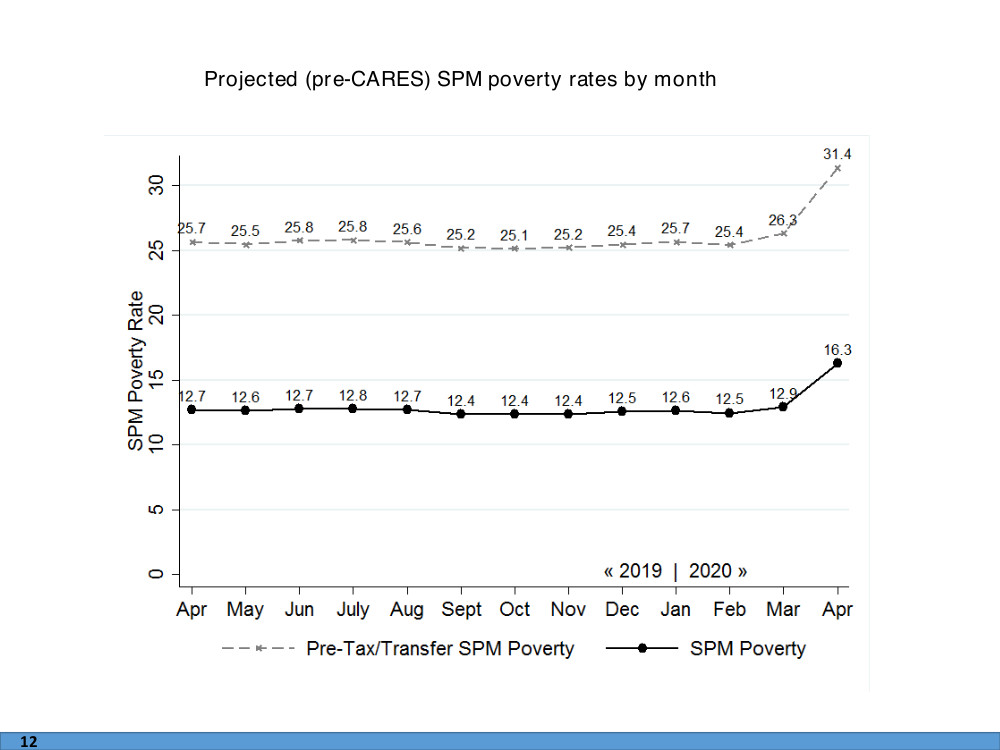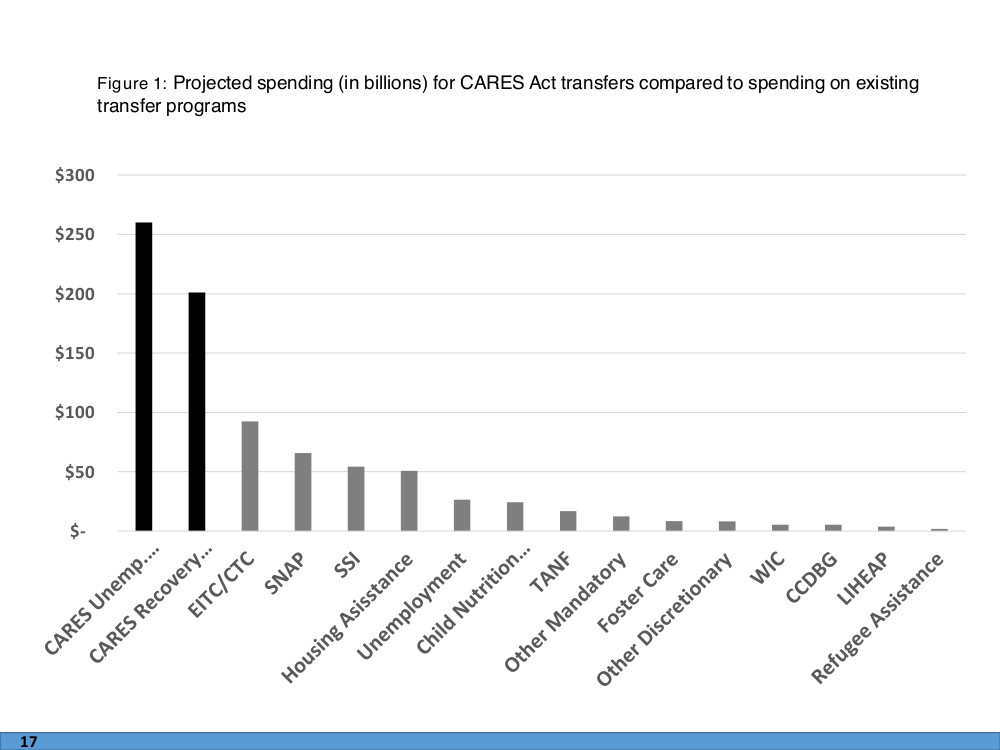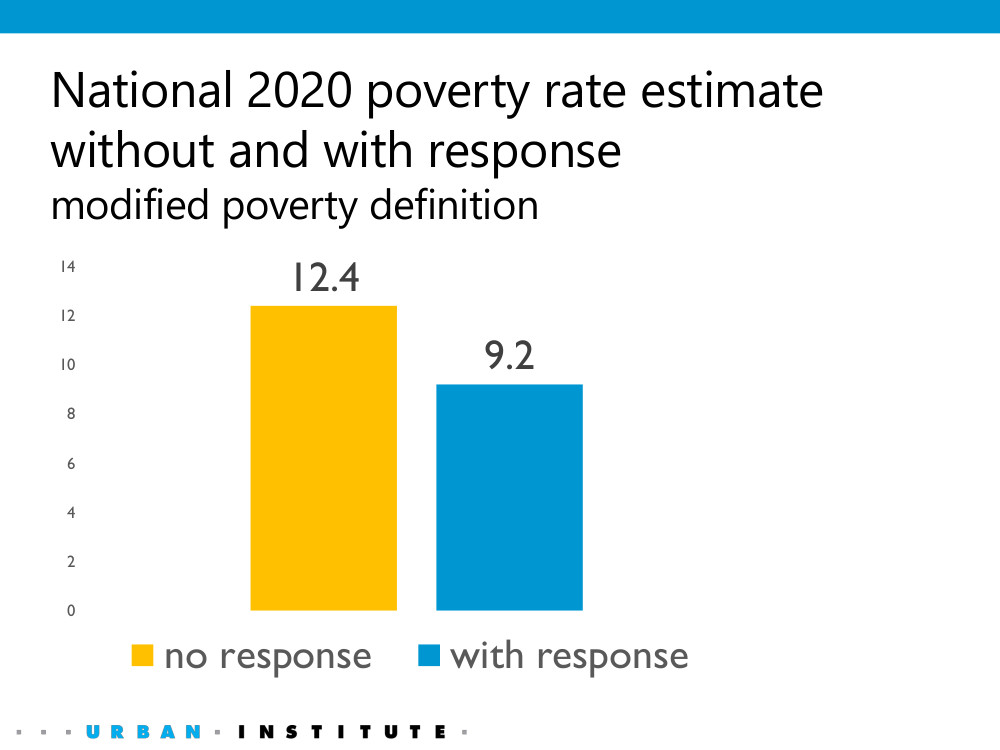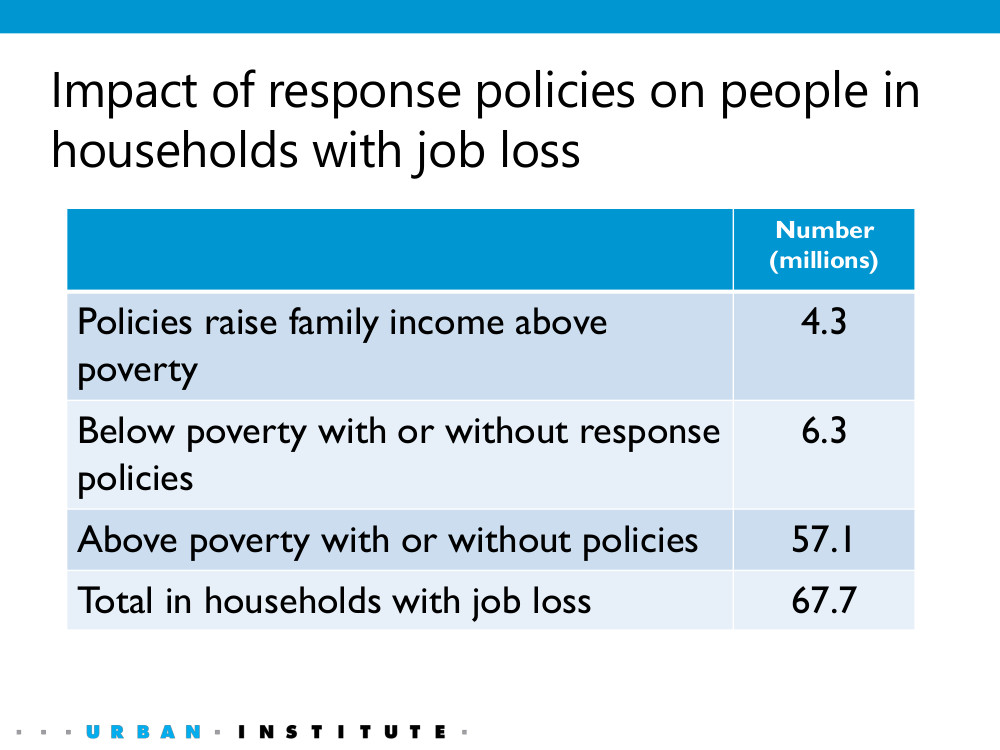- Jennifer Romich, Linda Giannarelli, Zachary Parolin, Bradley Hardy, and Pamela McCauley
- July 15 2020
- W68-2020





Jennifer Romich (Host), West Coast Poverty Center, University of Washington
Linda Giannarelli, Urban Institute
Zachary Parolin, Center on Poverty and Social Policy, Columbia University
Bradley Hardy (Discussant), School of Public Affairs, American University
Pamela McCauley (Discussant), Minnesota Department of Human Services
Linda Giannarelli, Urban Institute
Zachary Parolin, Center on Poverty and Social Policy, Columbia University
Bradley Hardy (Discussant), School of Public Affairs, American University
Pamela McCauley (Discussant), Minnesota Department of Human Services
The Covid-19 pandemic has brought increases in hardship for many people, but the usual ways we measure poverty don’t offer immediate feedback on the number of people in poverty in the United States. In this webinar, the presenters discuss what can be known in real time or close-to-real time about recent changes in poverty. The discussion focuses on:
- How did the nature of the pre-Covid economy create risks for poverty? How do these risks vary across demographic groups and geographies?
- What likely has happened to poverty rates and what will happen over the next several months as a result of the Covid-19 economic fall-out?
- To what extent have initial federal policy responses buffered any effects on poverty? (And what factors may be limiting their anti-poverty potential?)
- What factors and data should researchers, advocates, and policymakers be tracking now and in the coming months?
Recording of Webinar
Highlights from the Webinar
(Clicking on pictures will take you to the webinar recording)




Categories
Child Poverty, Children, Economic Support, Economic Support General, Employment, Labor Market, Poverty Measurement, State & Local Measures, U.S. Poverty Measures, Unemployment/Nonemployment